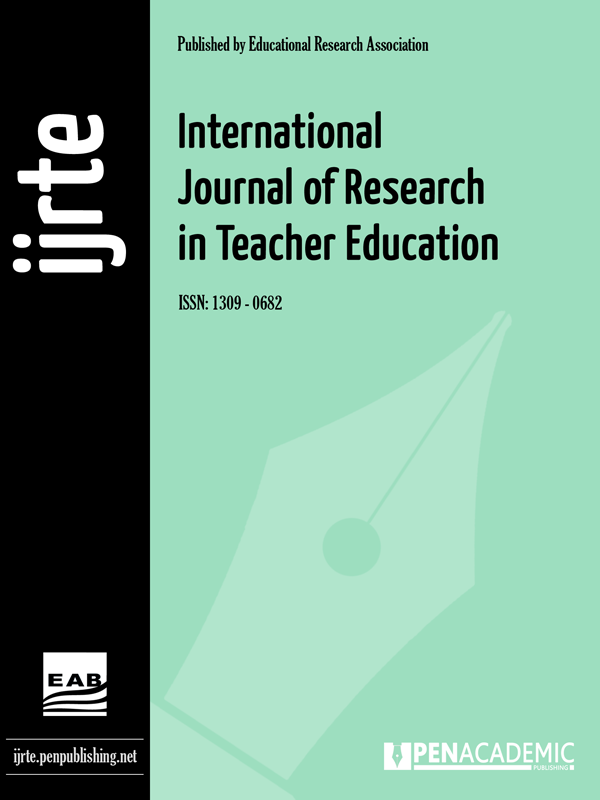Original article | International Journal of Research in Teacher Education 2018, Vol. 9(3) 44-63
Corpus Linguistics Approach to In-Service Teacher Development
Mogahed Abu Al-Fadl
pp. 44 - 63 | Manu. Number: MANU-1808-19-0001.R1
Published online: September 30, 2018 | Number of Views: 56 | Number of Download: 684
Abstract
This study provided 10-week training in corpus linguistics and its relation to language teaching. Nineteen English teachers were randomly selected. It sought to give content for the training course in using corpus linguistics in language teaching. It also tried to find the effect of corpus linguistics on language teaching. The study adopts the quasi-experimental design in terms of using a pretest/ posttest design: paired sample t-test. A Corpus Linguistics Test was used as a pretest/posttest. It proved that there are statistically significant differences between the mean scores the corpus linguistics pretest and posttest in favour of the posttest scores.
Keywords: Teacher education, in-service, development, corpus linguistics
| How to Cite this Article? |
|---|
|
APA 6th edition Harvard Chicago 16th edition |
| References |
|---|
|
AnNayef, M. (2001). Corpora, concordances, and collocations in classroom teaching: Designing listening materials. The First International TEFL Conference, ESP Centre, Damascus University, Damascus, Syria, 27-29. Retrieved from: https://www.academia.edu/178284/Corpora_concordances_and_collocations_in_classroom_teaching_Designing_listening_materials
Boulton, A. (2012). The Call Triangle: Student, teacher and institution: What data for data-driven learning? EUROCALL (European Association for Computer-Assisted Language Learning). Retrieved from: http://webcache.googleusercontent.com/search?q=cache:K6PpB6Dx6wIJ:eurocall.webs.upv.es/documentos/newsletter/papers_20(1)/07_boulton.pdf+&cd=1&hl=ar&ct=clnk&gl=sa Conrad, S. (2000). Will corpus linguistics revolutionize grammar teaching in the 21st century? TESOL Quarterly 34, 548–60.
Cuban, L. (2001) Oversold and Underused: Computers in the Classroom. Cambridge, MA: Harvard University Press.
Egbert, J., Paulus, T.M. & Nakamichi, Y. (2002) The impact of CALL instruction on classroom computer use: A foundation for rethinking technology in teacher education. Language Learning and Technology, 6 (3), 108–126.
Farr, F. (2008). Evaluating the use of corpus-based instruction in a language teacher education context: Perspectives from the users. Language Awareness,17 (1), 25-43.
Granath, S. (2009). Who benefits from learning how to use corpora? In Karin Aijmer (Ed.), Corpora and language teaching. Amsterdam: John Benjamins.
Guan, X. (2013). A Study on the Application of Data-driven Learning in Vocabulary Teaching and Leaning in China's EFL Class. Journal of Language Teaching and Research, 4 (1), 105-112.
Heather, J. & Helt, M. (2012). Evaluating Corpus Literacy Training for Pre-Service Language Teachers: Six Case Studies. Journal of Technology and Teacher Education, 20 (4), 415-440.
Leńko-Szymańska, A. (2014). Is this enough? A qualitative evaluation of the effectiveness of a teacher-training course on the use of corpora in language education. ReCALL, 26, (2), 1-19.
Mauranen, A. (2004). Spoken corpus for an ordinary learner. In Sinclair, H. M. (Ed.), How to use corpora in language teaching. Amsterdam: John Benjamins.
Meunier, F. (2002). The pedagogical value of native and learner corpora in EFL grammar teaching. In Granger, S., Hung, J. and Petch-Tyson, S., eds, Computer learner corpora, second language acquisition and foreign language teaching. Philadelphia: John Benjamins, 119–42.
Mukherjee, J. (2004). Bridging the gap between applied corpus linguistics and the reality of English language teaching in Germany. In: Connor, U. and Upton, T. (Eds.), Applied corpus linguistics: A multidimensional perspective. Amsterdam/New York: Rodopi, 239–250.
Romer, U. (2006). Pedagogical applications of corpora: Some reflections on the current scope and a wish list for future developments. Zeitschrift für Anglistik und Amerikanistik, 54 (2), 121–134.
Romer, U. (2010). Using general and specialized corpora in English language teaching: Past, present and future. In Campoy-Cubillo, M.C., Bellés-Fortuño, B.and Gea-Valor., L.(Eds.), Corpus-based approaches to English language teaching. London: Continuum, 18–35.
Sinclair, J. (1996). The search for units of meaning. Textus, IX: 75–106.
Tsui, A. B. (2004). What teachers have always wanted to know. In Sinclair, H. M. (Ed.), How to use corpora in language teaching. Amsterdam: John Benjamins. |


